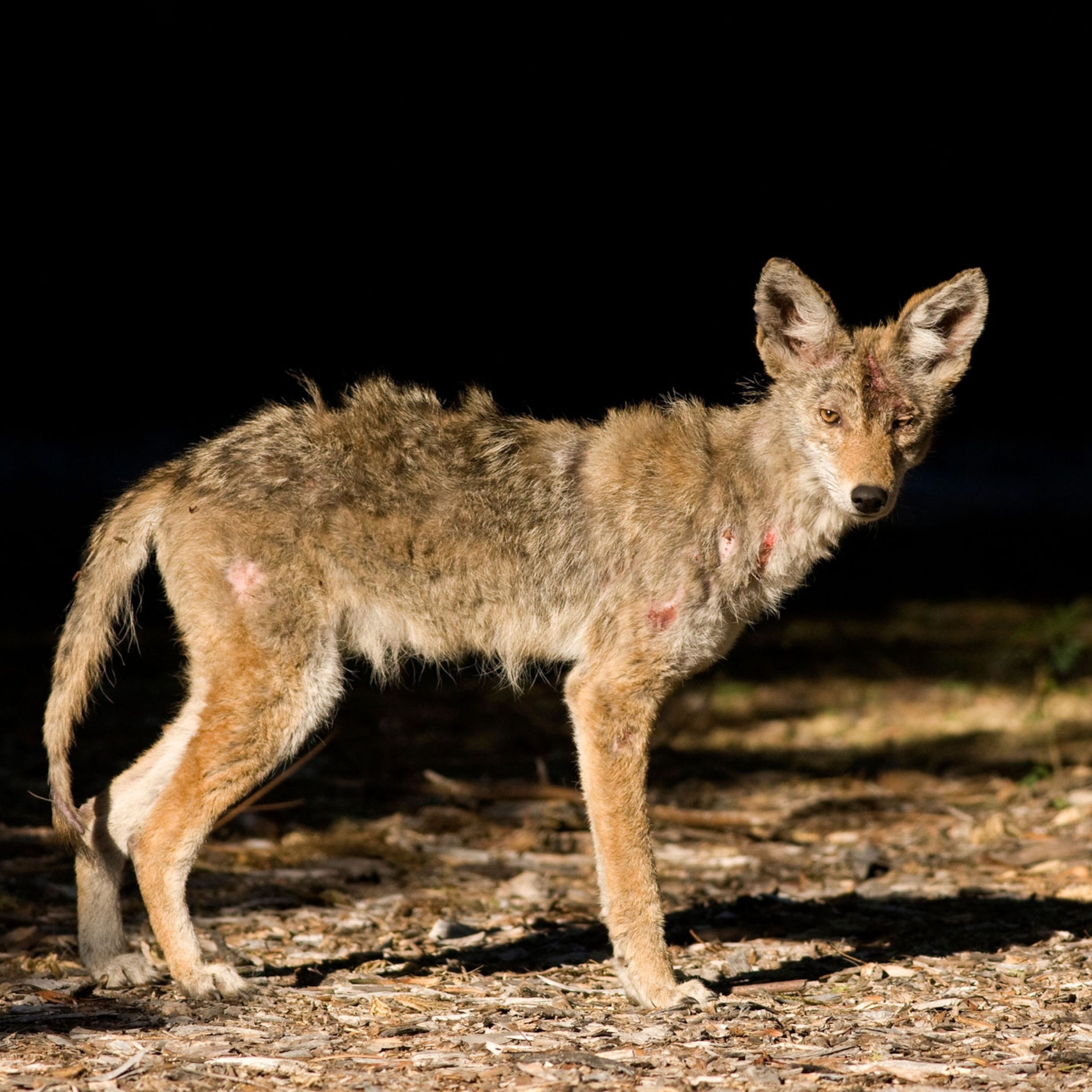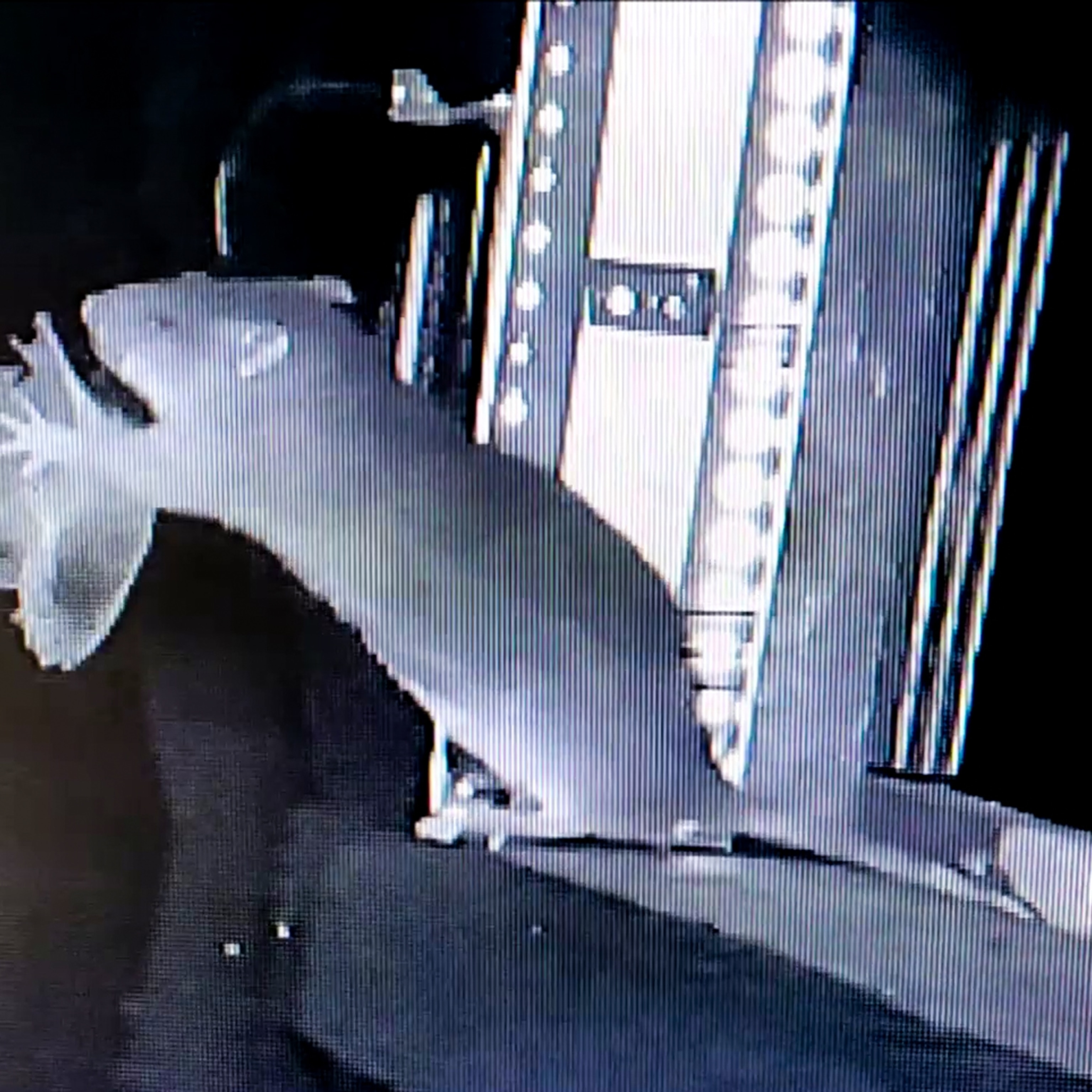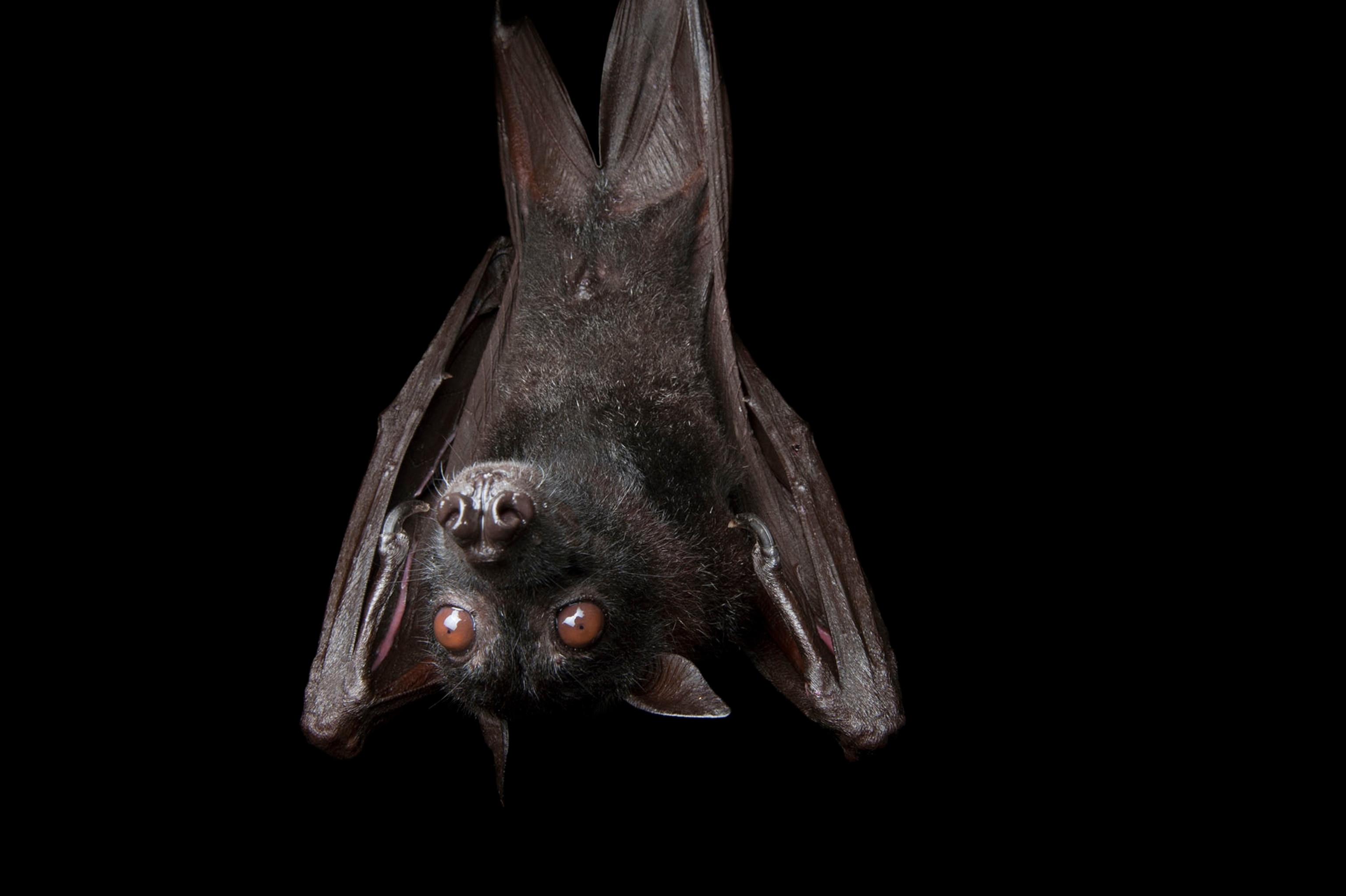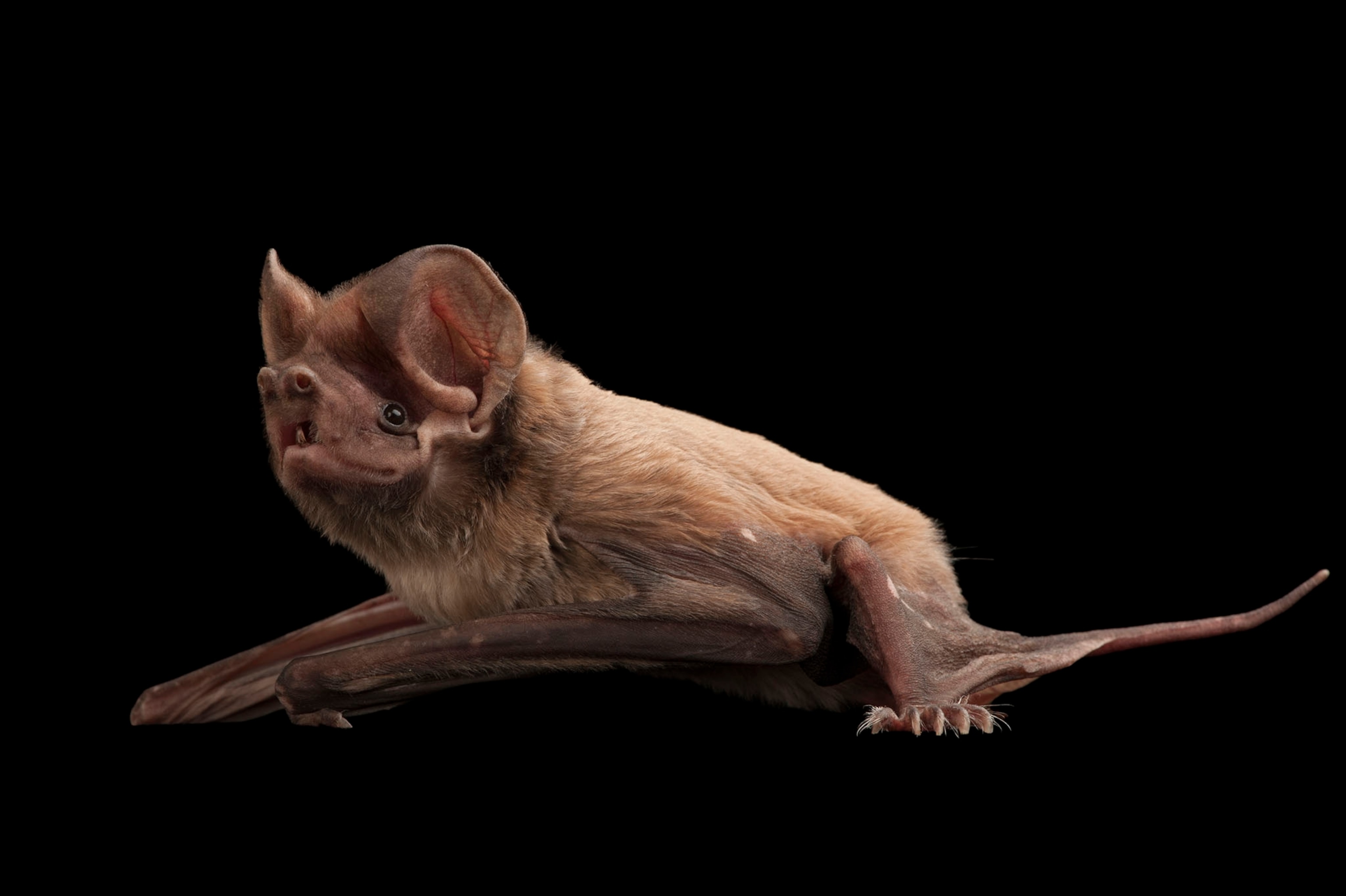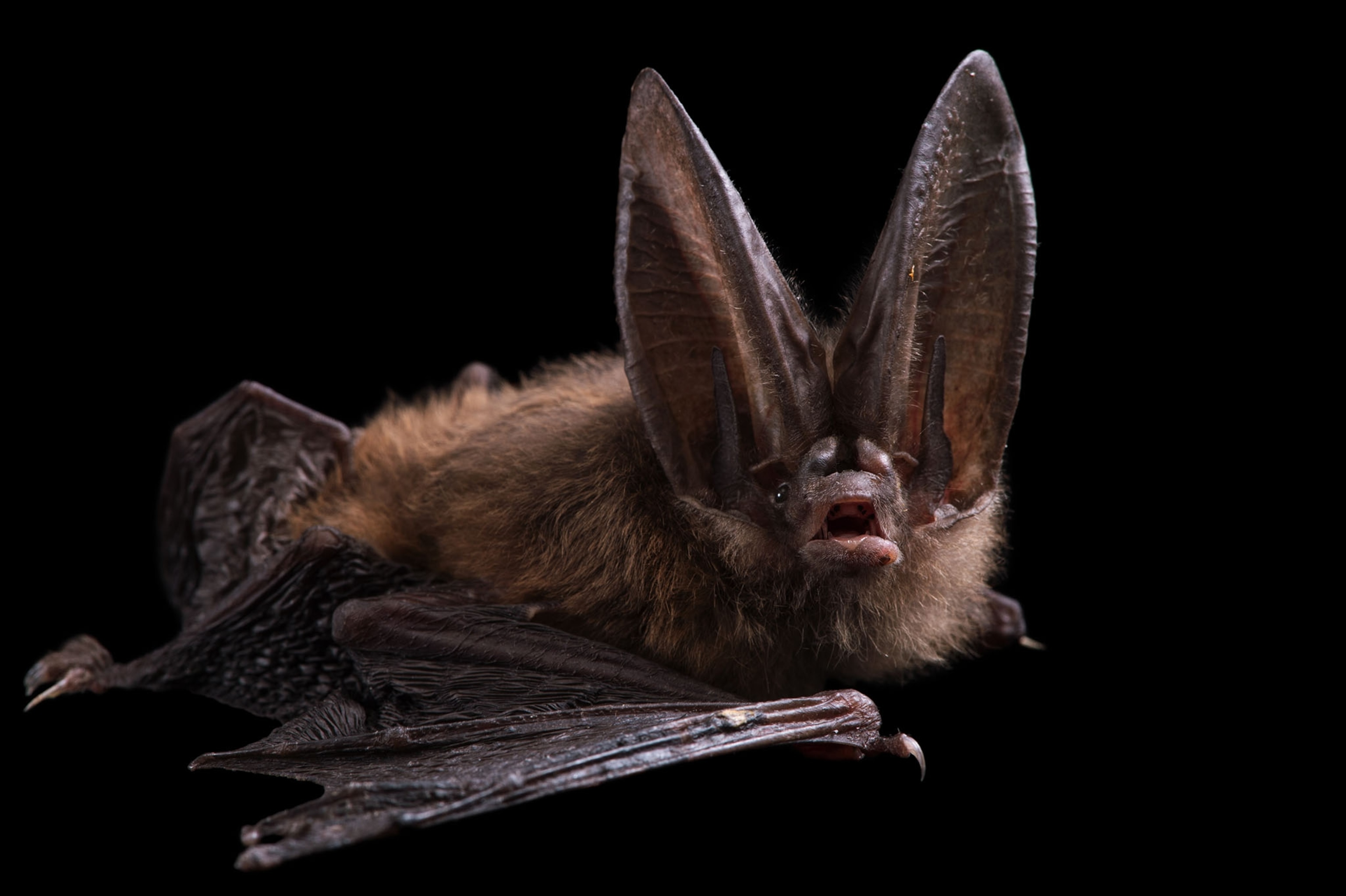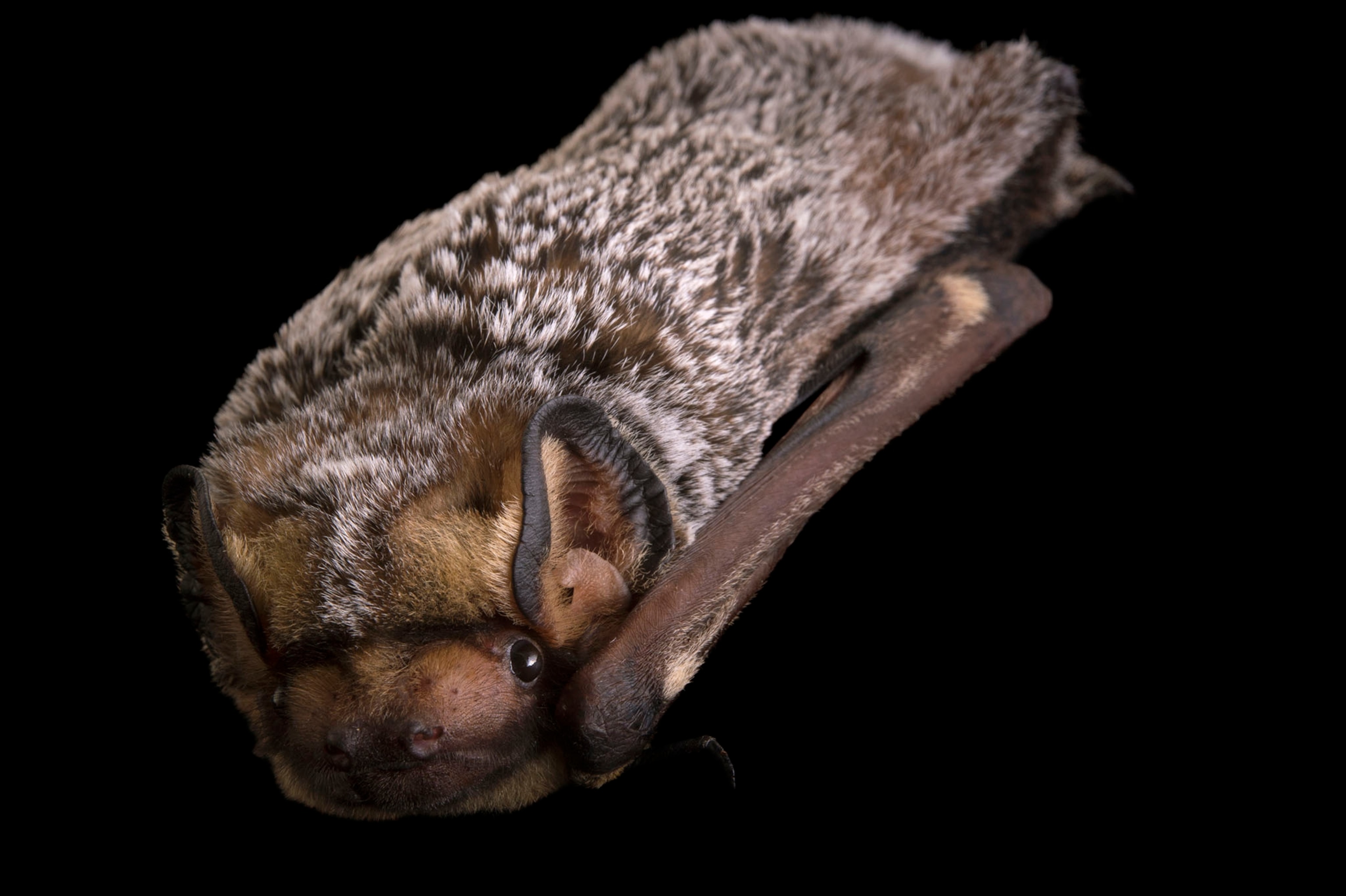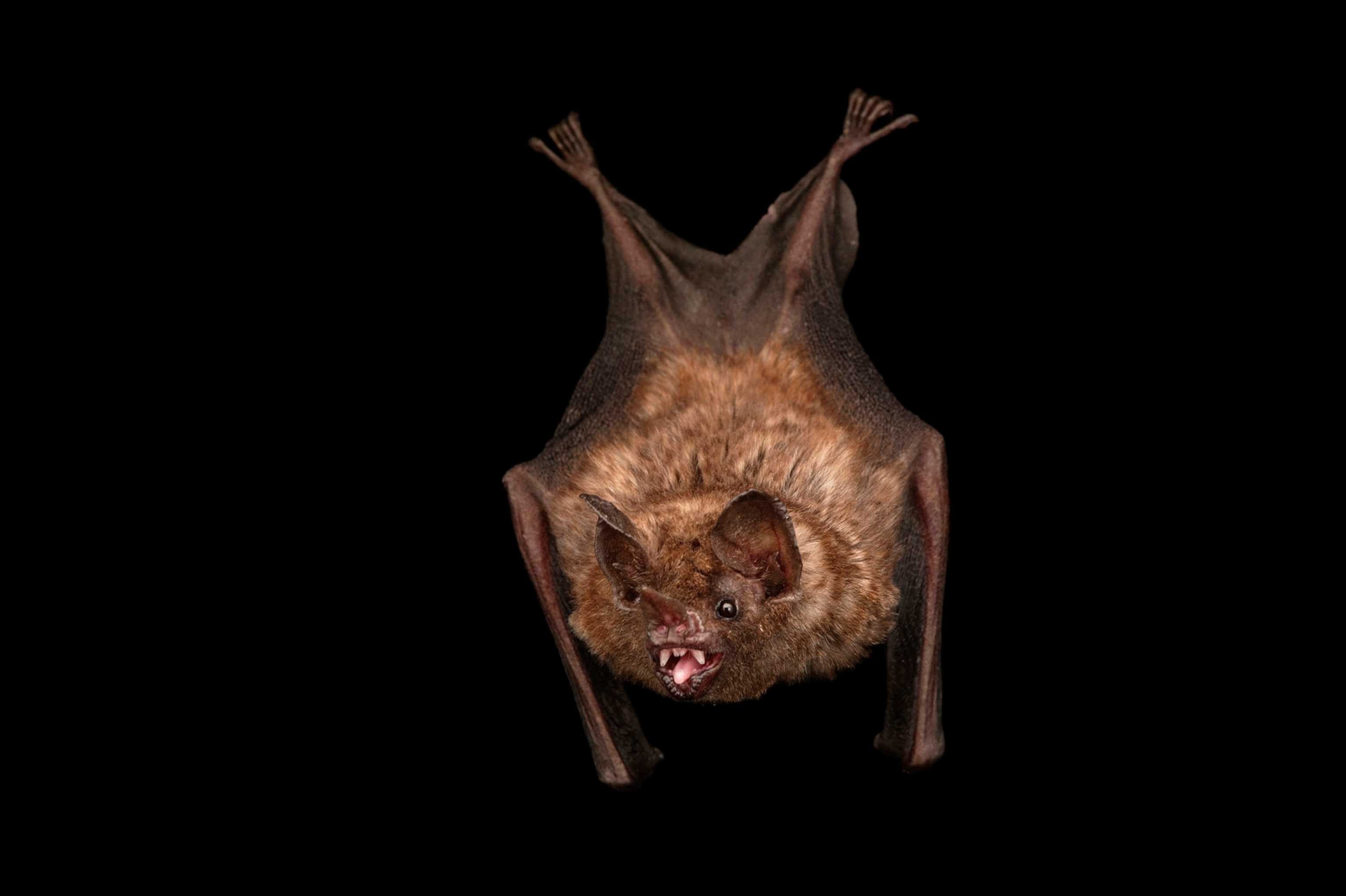WESTERN PENNSYLVANIA—A few hours outside of Pittsburgh, Pennsylvania, there’s an abandoned, partially flooded railroad tunnel with a reputation for being haunted. Decades’ worth of graffiti warn the curious to stay away, while inside, a long corridor of fetid water sloshes about my knees as the daylight disappears.
And it’s true what they say about the place, by the way. An invisible killer lurks within.
Scientists call it Pseudogymnoascus destructans, or Pd. But it’s also known as the flesh-eating fungus that’s been annihilating bat populations across North America. In just over a decade, it has killed off upwards of six million bats.
But scientists aren’t giving up hope yet. In fact, there’s a slate of clever new projects in the works that are testing everything from pineapple extracts and ingredients in constipation medicine to lickable vaccines and ultraviolet radiation to turn the tide against the fungus.
Pd was first discovered in New York state in 2006, and the disease it causes, called white-nose syndrome, can now be found in 33 states and seven Canadian provinces. (Related: How a killer fungus burns up bats from the inside.)
“Some species have been absolutely decimated,” says Winifred Frick, chief scientist at Bat Conservation International. “We call long-eared bats, little brown bats, and tricolored bats ‘the big three’.” (Related: 6 Bat Myths Busted: Are They Really Blind?)
“This disease is incredibly vexing and difficult to solve,” says Frick. “But the way we’re going to get there is by all working together and pooling our creative energies.”
Incredible, edible PEG
Outside the railroad tunnel in Pennsylvania, 100 gallons of water sits waiting to be mixed with 220 pounds of polyethylene glycol. Called PEG for short, this substance has been around since the 1960s, and today can be found in everything from adhesives and egg cartons to bar soaps, lipsticks, and suppositories.
But now it will be loaded into Ghostbuster-like backpack sprayers and used to coat every inch of the tunnel walls and ceiling.
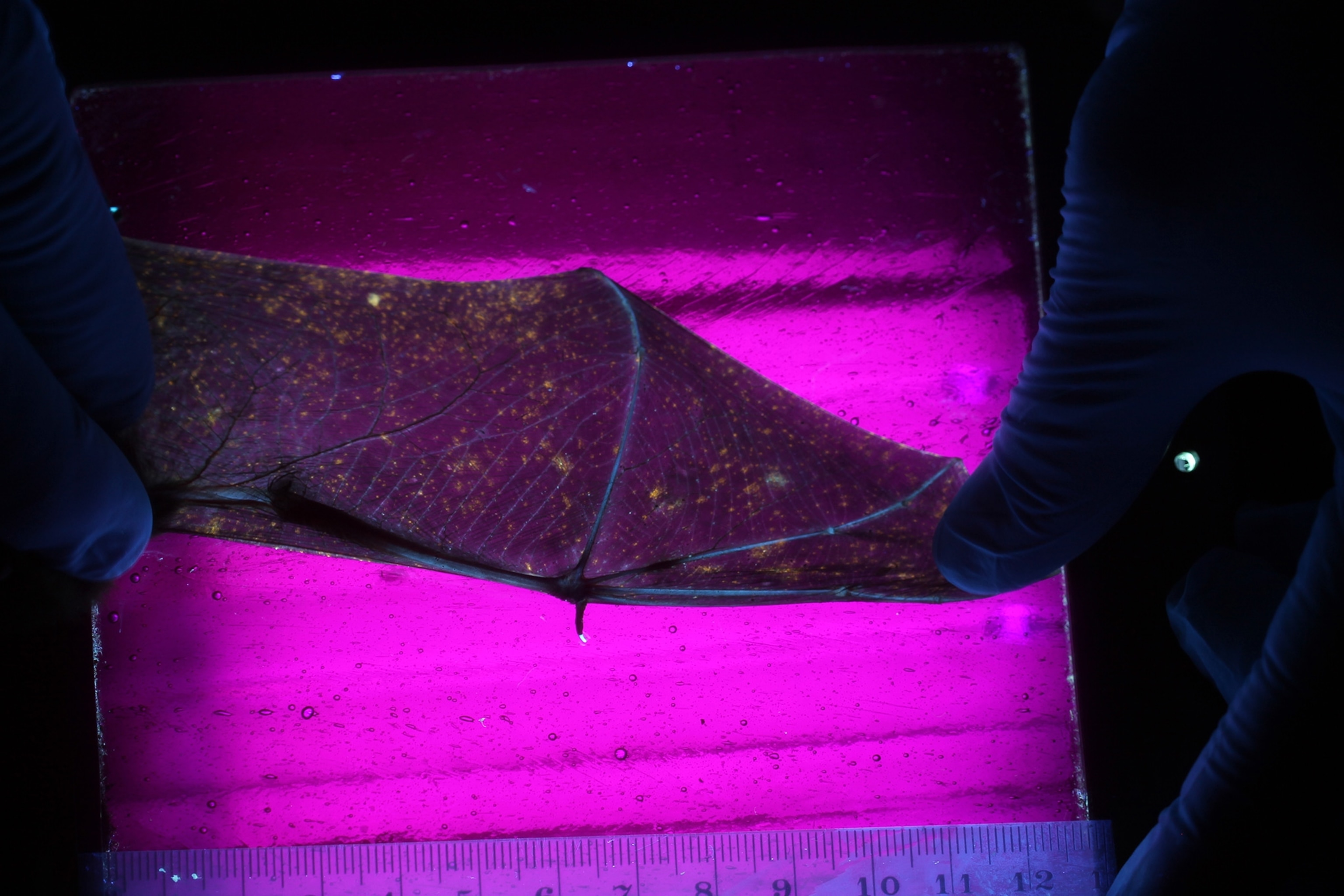
Incredibly, PEG seems to be able to trick the Pd fungus into thinking the environment is bone-dry—even if it’s really a railroad tunnel full of water. In response, the bat-eating fungus just shuts down and stops producing spores. And because the PEG is applied well before the bats even enter the tunnel for winter hibernation, the goal is to create a safe haven in which the animals can wait out the cold.
“We’re trying to make the environment less conducive to Pd,” says Barrie Overton, a mycologist at Lock Haven University in Pennsylvania who received a grant from the Bats for the Future Fund, a public-private partnership with financial contributions from the U.S. Fish and Wildlife Service. “And hopefully that helps more bats survive.”
And if it turns out the PEG can’t do the job on its own, the team plans to add a fungicide derived from yeast into the mix. “A one-two punch,” says Overton.
If you like piña coladas
At another railroad tunnel in Georgia, researchers are working on a completely different kind of spray—one that can be applied directly to the bats. Believe it or not, the active ingredient was discovered in wild Bolivian pineapples.
“The fungus, Muscodor crispins, lives in between the cells of the wild pineapple plant,” says Chris Cornelison, an applied microbiologist at Kennesaw State University in Georgia. “The specific role it plays in the host’s physiology and life cycle is unknown.'”
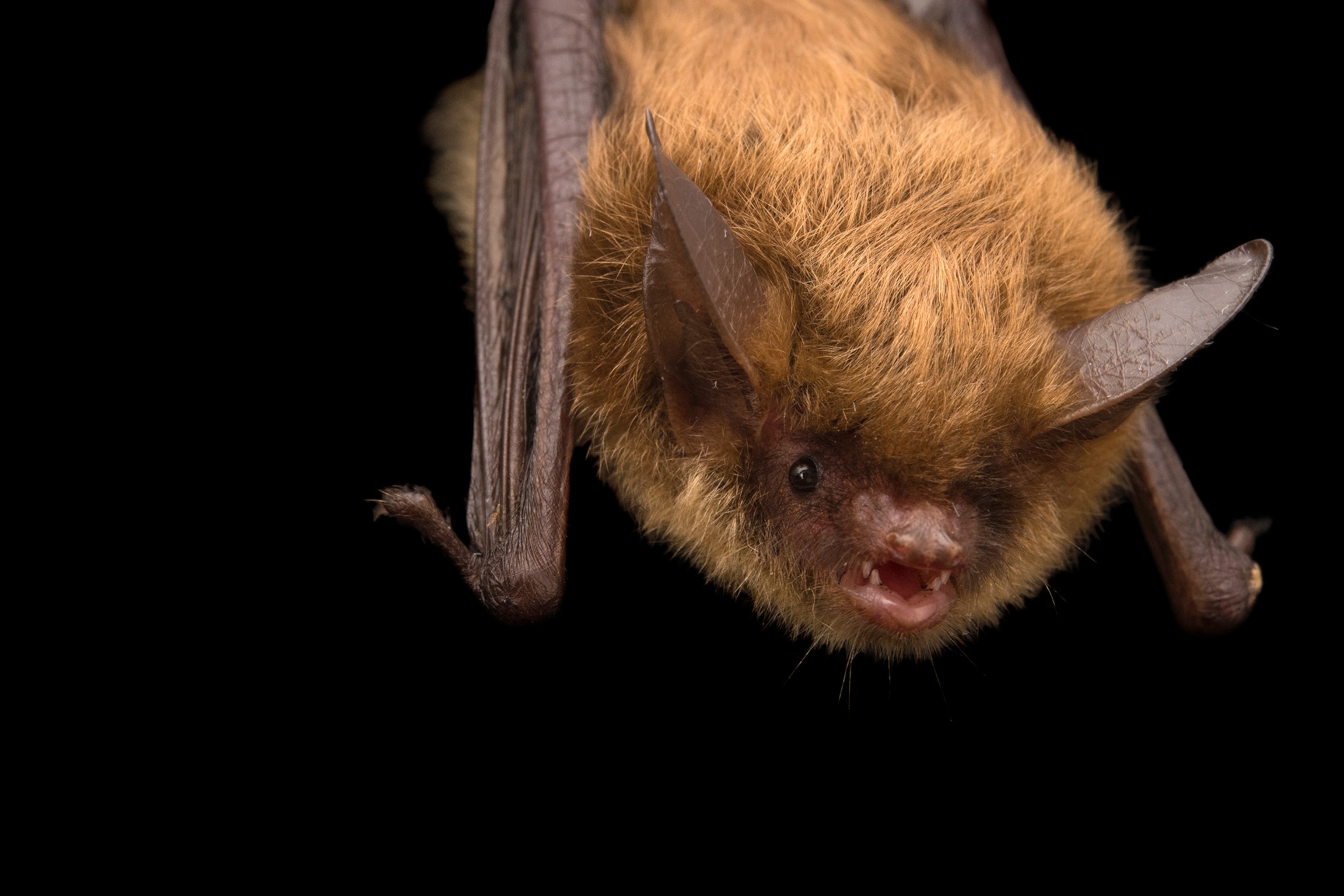
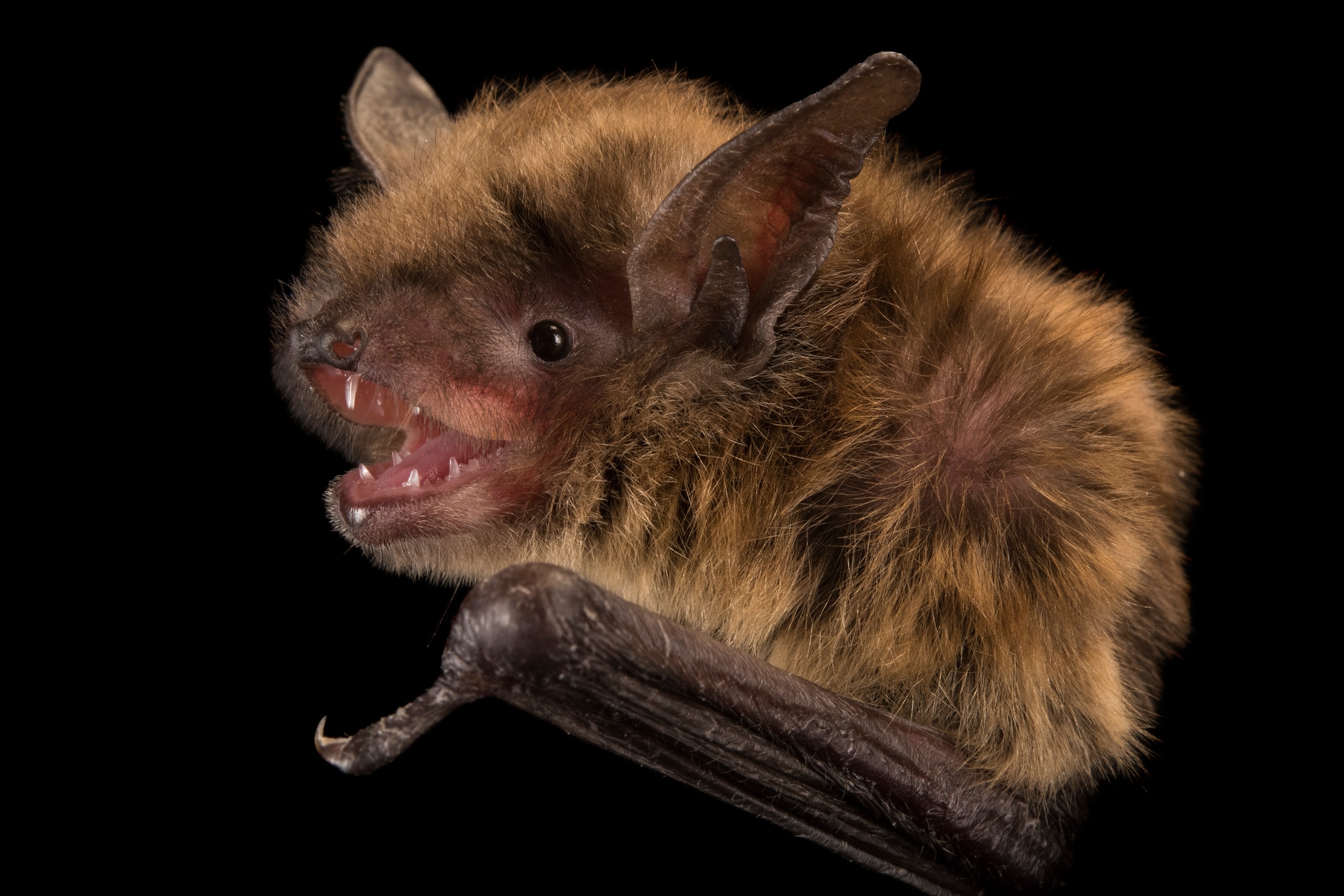
However, what we do know about the pineapple fungus is that it inhibits the growth of other fungi. Which is why Cornelison and his colleagues have been testing its effectiveness on the 200 or so tricolored bats that still live in Black Diamond Tunnel in northeastern Georgia, once home to more than 5,500 tricolored bats as recently as 2013.
Because Black Diamond Tunnel is full of frigid water too deep to wade through, the researchers have created a pulley system that transports an aluminum boat outfitted with a rotary atomizer, or fogger. They’ve even given their bat-saving rig a name: Batilda.
So far, Cornelison says they’re seeing an increase in the bat population at the site since they started spraying. However, until they can do more testing, it’s important to be “very cautious” about saying the treatment is working, he says. The team will also be adding another component called decanal to the cocktail this winter. An organic compound commonly found in citrus fruits and coriander herbs, decanal has also been found to kill Pd spores in the lab.
How many licks to save the bats?
Another promising method for saving bats is a vaccine that allows the animals to fight off the fungus with their own immune system. The best part, no needles. This vaccine will be lickable.
“Bats are very fastidious by nature,” grooming themselves and others, says Tonie Rocke, a research epidemiologist with the U.S. Geological Survey. “They lick off anything that’s applied to them.”
This is why Rocke and her colleagues are developing a jelly-like substance that can either be applied to bats as they roost or perhaps sprayed onto them as they enter a hibernation site. The bats would then assist in transferring the vaccine to their neighbors as they jostle for the best hibernation positions, while finally consuming the substance as they groom.
“If we are successful, a vaccine could provide life-long immunity to treated bats,” says Rocke.
What’s more, Rocke says this approach could be used to treat other diseases that afflict bats, such as rabies.
A light in the darkness
While others focus on chemicals and vaccines, Frick is experimenting with the age-old disinfecting power of sunlight. Or an artificial version of it, at least. (Related: More on how light may kill the Pd fungus.)
“The fungus has this unique sort of genetic sensitivity to ultraviolet light,” she says.
All it takes is thirty seconds of low-level UV to knock down the fungus, and best of all, the light seems to have little to no effect on other native microbes. Right now, Frick and her colleagues are testing how long the effects last in abandoned mines in Arkansas, Alabama, and Canada. They are also treating sections of these mines with PEG to see how the two methods compare.
If the ultraviolet light proves as effective as she hopes, Frick says they will then need to solve the engineering problem of how to create an energy-efficient light source big enough to treat entire mines or caves—kind of like Batman’s Bat Signal.
Frick is also part of another project using a molecule called chitosan. Derived from the exoskeletons of shellfish and insects, chitosan already helps treat obesity, high cholesterol, and Crohn’s disease in humans. For bats, scientists are interested in the fiber’s ability to act as an antifungal agent that promotes wound-healing.
So far, Frick and her colleagues have treated little brown bats in Michigan where the fungus is already well established, as well as bats in Texas where they hope to halt the spread before it takes hold.
“There have been some early trials with promising results showing that it reduced the disease severity in bats and could potentially increase survival,” says Frick.
The road ahead
Back at the haunted railroad tunnel, Pennsylvania State Game Commission wildlife biologist Greg Turner takes a break from the roar of the backpack sprayer to explain why all these various approaches might seem so scattershot.
“What we’re trying to find are tools that would be specific for different situations in different species,” he says.
For instance, even if a vaccine gel were found to be wonderfully effective on huge hibernating colonies of little brown bats, the same strategy might not work for tricolored bats because that species tends to roost individually.
And the projects above are far from an exhaustive list of strategies currently in the works. In addition to the PEG treatments, Turner is investigating changing the airflow in some caves to make them cooler and less conducive to Pd growth. Climate control for caves, in other words.
From Washington state and Texas to Manitoba and Newfoundland, scientists of every stripe have rallied together to find something, anything, that will buy time against the killer fungus. In fact, European bats have evolved to coexist with Pd, and there’s evidence that bats in the United States are starting to resist the fungus, too.
“We’ve seen a dramatic decrease in the amount of infection these bats are getting in a very short period of time already,” says Turner. However, because the fungus appears to affect each species differently, some bats may not be able to afford to wait.
Whether it’s PEG, chitosan, ultraviolet light, or any of the other proposed ideas, Turner says such treatments are really just a Band-Aid—a temporary strategy meant to stop the bleeding long enough for the bats that remain to repopulate the landscape.
“What we really need is for the bats themselves to eventually evolve and survive as they do in Europe,” he says.


